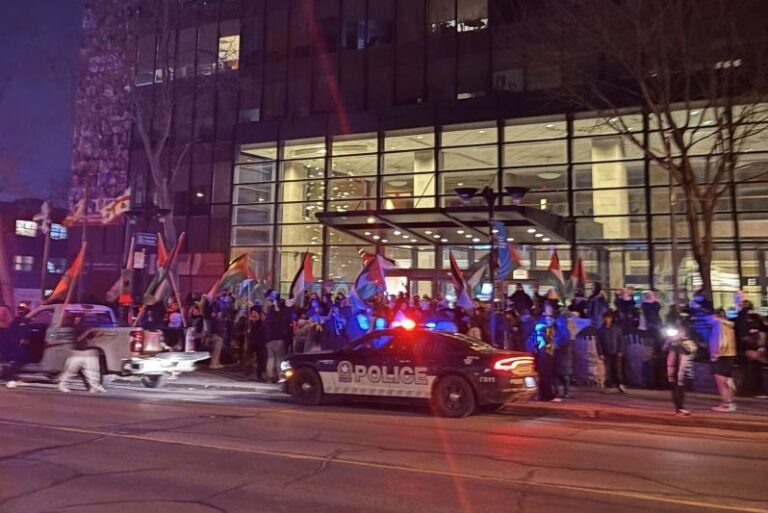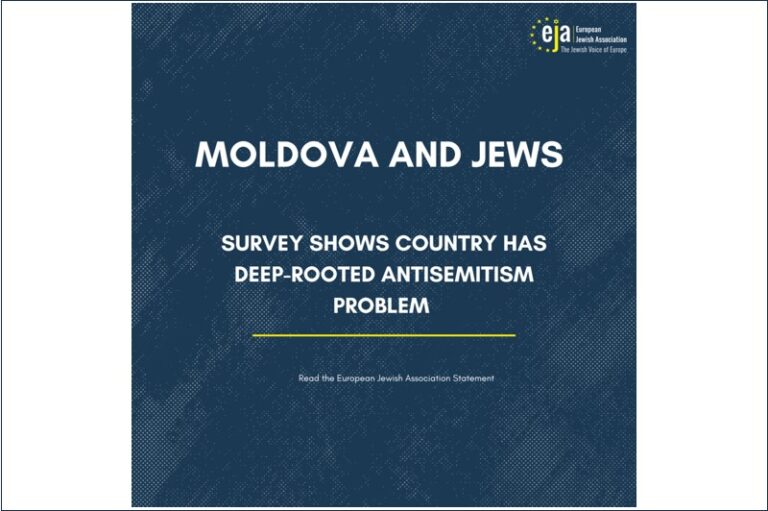By Oren Segal, Vice President, ADL Center on Extremism
On October 27, 2018, white supremacist Robert Bowers murdered 11 congregants and wounded 2 others in a shooting spree at the Tree of Life Synagogue in Pittsburgh, Pennsylvania. Bowers is reported to have yelled, “All Jews must die!” during his assault. A review of his social media posts showcased his virulent hatred of Jews and his white supremacist beliefs. The attack was the deadliest antisemitic attack in U.S. history.1
Since the attack in Pittsburgh, at least 16 white supremacists and a handful of other extremists have been arrested for their alleged roles in significant terrorist plots or attacks against the Jewish community. The attacks against the Jewish community, with targets ranging from a synagogue in Poway, California, to a kosher market in Jersey City, New Jersey, have coincided with rising numbers of hate crimes overall and antisemitic incidents. Coupled with the never-ending online chorus of antisemitism and hatred, which can drive and amplify targeted violence on the ground, it is little wonder that the U.S. Jewish community feels profoundly insecure in a country that has long been a safe haven.
The rising number of antisemitic incidents in the United States mirror the data from Jewish communities around the globe, where some Jews are feeling more isolated and vulnerable as a result, according to recent surveys. A December 2018 European Union survey found that 80 percent of European Jews feel that antisemitism in their countries has increased over the past five years, and 40 percent live in daily fear of being physically attacked.2
Understanding the manifestations of targeted violence against the Jewish community is critically important for law enforcement and its mission of keeping every community safe. As Jews know all too well, hate that impacts the Jewish community is a threat to all communities.
Recent Trends in Antisemitism
The Jewish community has watched in horror as the number of antisemitic incidents, violent attacks in particular, have risen substantially in recent years.3
While these attacks most directly affect the individual victims and their families and friends, these incidents send shockwaves of terror throughout the entire Jewish community. The violence reverberates through the media and is shared widely online. These attacks are shaping Jewish American self-perception.
Since 1979, ADL has published an annual Audit of Antisemitic Incidents, a tally and analysis of verified incidents of antisemitic harassment, vandalism, and assault in the United States. In 2019, the agency documented more than 2,100 criminal and noncriminal antisemitic acts in the United States.4 This was the highest total in 40 years of collecting such data. The 2017 total of 1,986 incidents was the second-highest total on record and the 2018 total of 1,879 incidents was the fourth-highest total. ADL documented a particularly concerning rise in physical assaults on Jewish individuals, from a total of 39 in 2018 to 61 incidents in 2019, a 56 percent increase.
In the United States, this increase in antisemitic incidents is happening against a backdrop of consistent but relatively low levels of antisemitic attitudes.5 That is, U.S. residents in general don’t hate more, but a small and growing group of individuals do, and they are acting on it. There are multiple factors driving this hate, including the normalization of antisemitism and the role of online platforms in amplifying hateful ideologies.
Extremism & Targeted Violence against Jews
Known extremist groups or individuals inspired by extremist ideology were responsible for 270 antisemitic incidents in 2019, representing 13 percent of the total for the year, the same percentage as the 249 such incidents in 2018. In both years, the 13 percent of incidents attributable to known extremist groups or individuals represented the highest percentage since 2004.6 The extremist-related incidents in 2019 emerged largely from harassment that involved distributing antisemitic flyers, as well as activities which included coordinated vandalism against synagogues and a targeted online trolling campaign. Nearly half of all incidents of harassment targeting Jewish institutions were the work of known white supremacists or extremists.
Nonviolent attacks against Jews, such as antisemitic flyer campaigns, are important to track not only because they affect the targeted community, but they can also introduce observers to extremist movements. Propaganda allows white supremacists to maximize media and online attention, while limiting the risk of individual exposure, negative media coverage, and arrests that often accompany more public events. Propaganda can also be a stepping-stone to violence. Several extremists arrested for their alleged roles in terrorist plots, attacks, or threats against the Jewish community since the Pittsburgh shooting previously participated in propaganda distribution or other forms of nonviolent harassment against Jews.
Corbin Kauffman, for example, was arrested in April 2019 for the interstate transmission of threats in which he reportedly “expressed a desire to commit genocide and ‘hate crimes,’ and called for or depicted images of the killing of Jewish people, black people, and Muslim people.”7 Kauffman was known to ADL because Center on Extremism researchers connected him to online postings of images of antisemitic graffiti at a public park and white supremacist and antisemitic defacement at the Chabad Jewish Center in Ocean City, Maryland.8 Similarly, William Josephus Warden distributed antisemitic propaganda in Cary, North Carolina, before he was arrested for threatening to damage a synagogue in the same city.9
Beyond the flyer distribution incidents, in the last two years extremists have perpetrated a number of high-profile, deadly assaults on U.S. Jews. Following the 2018 attack in Pittsburgh, there was the deadly assault on a synagogue in Poway, California, an attack that would have yielded many more casualties had a federal agent not been at the scene, a mass shooting at a kosher marketplace in Jersey City, New Jersey, and a violent stabbing attack in Monsey, New York, during a Hanukkah celebration.
At the Poway synagogue, 19-year-old John Earnest allegedly opened fire, leaving one dead and three injured.10 The assault took place on April 27, 2019, the final day of Passover, a holiday celebrating the Jews’ delivery from oppression, exactly six months after the deadly shooting rampage in Pittsburgh.
Earnest’s manifesto detailed his hatred for Jews and all non-Christians and referred admiringly to Bowers as well as Brenton Tarrant, the Australian white supremacist who targeted Muslims in a March 2019 attack in New Zealand that left 51 people dead. His writing also featured a laundry list of antisemitic conspiracy theories, including the longstanding white supremacist assertion that Jews are responsible for non-white immigration to the United states that “threatens” the white race.11 “Every Jew is responsible for the meticulously planned genocide of the European race,” Earnest wrote, adding, “For these crimes they deserve nothing but hell.”12 This language mirrored Tarrant’s posts on 8chan prior to the New Zealand shooting and Bowers’s on Gab prior to the Tree of Life attack.
On December 10, 2019, in Jersey City, New Jersey, David Anderson and Francine Graham allegedly killed a Jersey City police officer and then opened fire in a kosher market killing three people: the store’s co-owner, an employee, and a customer. Following the attack, New Jersey Attorney General Gurbir Grewal stated that the shooting was being investigated as an act of domestic terrorism motivated by antisemitic and anti–law enforcement sentiments. One of the alleged shooters appears to have been an adherent of Black Hebrew Israelite teachings.13 Some extreme proponents of this ideology harbor intense antisemitic beliefs, including that Jews have stolen the mantle of the biblical tribes of Israel from indigenous peoples of Africa and the Americas.
In a third episode of targeted violence against the Jewish community, a December 2019 Hanukkah gathering in Monsey, New York, was shattered when a man entered a local rabbi’s home armed with a large knife and began stabbing people. The attack left five injured, including one man who died from his injuries three months later. Alleged assailant Grafton Thomas pleaded not guilty to the initial charges, and federal prosecutors subsequently filed hate crimes charges against Thomas, while authorities released a criminal complaint that may provide insight into the motivation for his attack. While searching Thomas’s home, police found handwritten antisemitic messages, a cryptic mention of Black Hebrew Israelites, references to Hitler and “Nazi Culture” and sketches of a swastika and a Star of David. He also reportedly used his phone to search for local “Zionist temples” and “German Jewish temples near me.”14
The attacks in Jersey City and Monsey contributed to a month-long period in December 2019 that saw over a dozen incidents of Jews being threatened, harassed, or physically assaulted in the New York City metropolitan area alone.
The Connection between Antisemitism and Other Forms of Hate
White supremacists continue to pose a serious threat to Jewish Americans, and to African Americans, Muslim Americans, Latinx Americans, immigrants, LGBTQ+ Americans, and other marginalized U.S. communities.
Deadly attacks against the Jewish community are part of a broader trend of increasingly lethal targeted attacks by domestic extremists in the United States. The past five years (2015–2019) includes four of the deadliest years on record for extremist-related murders.15 Extremists’ use of firearms is largely responsible for the higher death totals in recent years. In 2019, extremist ideologically motivated murders targeted Jews in two incidents, Hispanics in one incident, and African Americans in one incident. In the year’s deadliest rampage, white supremacist Patrick Crusius killed 22 people and wounded 24 more at a Walmart in El Paso, Texas. Crusius chose El Paso in order to target what he described in a manifesto as “the Hispanic community,” driving more than 10 hours from his home outside of Dallas to El Paso. The shooting illustrated the internationalization of white supremacy and the role of online spaces in cultivating hate, as Crusius claimed to have been inspired by the New Zealand mosque shooter and his online manifesto.
Extremists also use the same nonviolent techniques to target the Jewish community and other minority groups. The proliferation of white supremacist flyer campaigns impacts minority communities with racist, anti-immigrant, homophobic, and Islamophobic language. In 2019, ADL counted 2,713 white supremacist flyer distribution incidents, more than double the 2018 numbers.16 This is the highest number of propaganda incidents in a single year ADL has ever recorded.
Established extremist groups like Patriot Front, American Identity Movement, New Jersey European Heritage Association, Daily Stormer Book Clubs, and Loyal White Knights distributed a variety of bigoted flyers targeting minority populations. In addition to antisemitic language, these flyers included such messages as “Diversity destroys nations”; “Send them back! Deport the Commie brown infestation”; “Stop the invasion caravan! Defend America! Troops to the border now”; “AIDS cures fags”; and “Love your own race. Stop homosexuality & race mixing.”17
Cultivating Hate in Online Spaces
Extremist violence does not exist in a vacuum. In many cases, especially in murders perpetrated by white supremacists, the hatred that motivates extremist violence is nurtured online in forums like Gab, 4chan, and 8chan.
Online platforms amplify and catalyze some of the most virulent forms of hate. Extremist groups are empowered by access to the online world; the Internet amplifies the hateful voices of the few to reach millions around the world.18 The online environment also offers community: while most extremists are unaffiliated with organized groups, online forums allow isolated extremists to become more active and involved in virtual campaigns of ideological recruitment and radicalization. As access to social media is nearly universal, terrorist and extremist movements are exploiting these technologies and platforms to increase the accessibility of materials meant to justify and instigate violence. Terrorist and extremist movements across the globe use online platforms to spread their messages and to actively recruit adherents.
How ADL Works with Law Enforcement to Prevent Extremist Violence
ADL is the United States’ largest nongovernmental provider of training for law enforcement on hate crimes, extremism, and terrorism. ADL provides law enforcement with information, expertise, and actionable intelligence to prevent, disrupt, and respond to those extremists who cross the line from espousing hateful ideologies to committing or inciting violent criminal acts, thus protecting the Jewish community and all people in the United States. ADL also delivers training geared to building trust between police and the people and communities they serve. Each year, ADL experts deliver customized, in-depth training to more than 15,000 federal, state, and local law enforcement personnel at a wide range of agencies.19
Through its Center on Extremism (COE), whose experts monitor a variety of extremist and terrorist movements and individuals, ADL also plays a leading role in identifying, exposing, and disrupting extremist movements and activities, while helping communities and government agencies alike combat them. The COE frequently assists law enforcement with extremist-related investigations and has played a significant role in the arrests of four white supremacists accused of plots, attacks, or threats against the Jewish community since the Pittsburgh shooting.
In late 2018, the COE supplied law enforcement with social media posts from white supremacist Dakota Reed. The posts referenced killing Jews in a synagogue and children in a school, and mentioned “pulling a Dylann Roof,” a reference to the white supremacist who murdered nine African American people in a Charleston, South Carolina, church.20 In May 2019, Reed pleaded guilty to making threats to bomb or injure property and was sentenced to one year in prison.21 In 2019, the COE alerted law enforcement to online threats posted by Las Vegas, Nevada, white supremacist Conor Climo and provided investigators with information about Feuerkrieg Division, a neo-Nazi group with which Climo was closely associated.22 Climo pleaded guilty in February 2020 to one count of possession of an unregistered firearm, specifically, the component parts of a destructive device.23
The COE’s role in assisting law enforcement on extremist-related cases is not limited to cases involving threats against the Jewish community. In one recent example, following an investigation in which ADL provided significant information to law enforcement, white supremacist Jarrett William Smith was arrested and pleaded guilty to unlawfully distributing instructions for making explosive devices over social media.24 In a separate case, federal authorities arrested John William Kirby Kelley in January 2020 for his alleged role in a multinational swatting and doxing case.25 Kelley was charged with conspiracy to commit an offense against the United States, specifically interstate threats to injure. The COE assisted the Los Angeles, California, Police Department and FBI throughout the broader investigation, analyzing thousands of online posts over several months. During this process, the COE identified an array of online profiles apparently linked to Kelley on Steam, Instagram, Github, and Twitter. Kelley’s arrest was part of a larger investigation into the activities of neo-Nazi group Atomwaffen Division; a month later, the investigation led to the arrests of five more Atomwaffen members across the United States.26
Addressing antisemitism requires a holistic approach. ADL’s 25 regional offices stand on the front lines of Jewish communities, offering services and support to anyone who experiences antisemitism. We also stand with our allies in other communities of faith and all those who have been targeted by hate. We must look at our education systems, our law enforcement capacity and training, our online social media platforms, and changes to our laws to immediately and effectively combat antisemitic violence.
Notes:
1 Anti-Defamation League (ADL), “Deadly Shooting at Pittsburgh Synagogue,” ADL Blog, October 27, 2018.
2 European Union Agency for Fundamental Rights, Experiences and Perception of Antisemitism: Second Survey on Discrimination and Hate Crime Against Jews in the EU (Luxembourg: Publications Office of the European Union, 2018); ADL, “Antisemitism Globally.”
3 Confronting the Rise in Antisemitic Domestic Terrorism: Hearing Before the House Homeland Security Committee Subcommittee on Intelligence and Counterterrorism, 116th Cong. (2020) (testimony of Jonathan Greenblatt, CEO and National Director ADL).
4 Center on Extremism, Audit of Antisemitic Incidents 2019 (New York, NY: ADL, 2020).
5 ADL, Antisemitic Attitudes in the U.S.: A Guide to ADL’s Latest Poll (New York, NY: ADL, 2020).
6 Center on Extremism, Audit of Antisemitic Incidents 2019.
7 ADL, “One Year After the Tree of Life Attack, American Jews Face Significant Threats,” ADL Blog, October 18, 2019
8 ADL, “Pennsylvania White Supremacist Arrested After Posting Violent Threats and Images,” ADL Blog, April 12, 2019.
9 ADL, “One Year After the Tree of Life Attack.”
10 ADL, “Deadly Shooting at California Chabad Highlights Threat to Jewish Houses of Worship,” ADL Blog, April 27, 2019.
11 ADL, “White Supremacists’ Antisemitic and Anti-Immigrant Sentiments Often Intersect,” ADL Blog, October 27, 2018; ADL, Glossary Terms (online), s.v. “White Genocide.”
13 ADL, “Jersey City Shooting What We Know,” ADL Blog, December 11, 2019.
14 ADL, “Stabbing Attack at Monsey Hanukkah Party Leaves Five Injured,” ADL Blog, December 30, 2019.
15 Mark Pitcavage, Murder and Extremism in the United States in 2019 (New York, NY: ADL, Center on Extremism, 2020).
16 ADL, “White Supremacists Double Down on Propaganda in 2019,” ADL Blog, February 11, 2020.
18 Mass Violence, Extremism, and Digital Responsibility: Hearing before the Senate Committee on Commerce, Science and Transportation, 116th Cong. (2019) (testimony of George Selim, Senior Vice President for National Programs, ADL).
19 ADL, “Partnering with Law Enforcement.”
20 ADL, “Washington White Supremacist Arrested for Threatening Mass Killings of Jews and Other Minorities,” ADL Blog, December 17, 2018; ADL, “White Supremacists React to Charleston Tragedy with Anger, Vitriol,” ADL Blog, June 19, 2015.
21 Caleb Hutton, “Monroe Man Guilty of Plotting Synagogue and School Shootings,” The Herald, May 11, 2019.
22 ADL, “Feuerkrieg Division (FKD).”
23 U.S. Attorney’s Office, District of Nevada, “Las Vegas Man Pleads Guilty to Possession of Bomb-Making Components,” news release, February 10, 2020.
24 U.S. Attorney’s Office, District of Kansas, “Guilty Plea: Soldier at Fort Riley Described How to Make Explosive Devices,” news release, February 10, 2020.
25 ADL, “Virginia Man with Links to Neo-Nazis Arrested in International Swatting Case,” ADL Blog, January 13, 2020.
26 ADL, “Atomwaffen Division (AWD).”
Source: Police chief magazine






